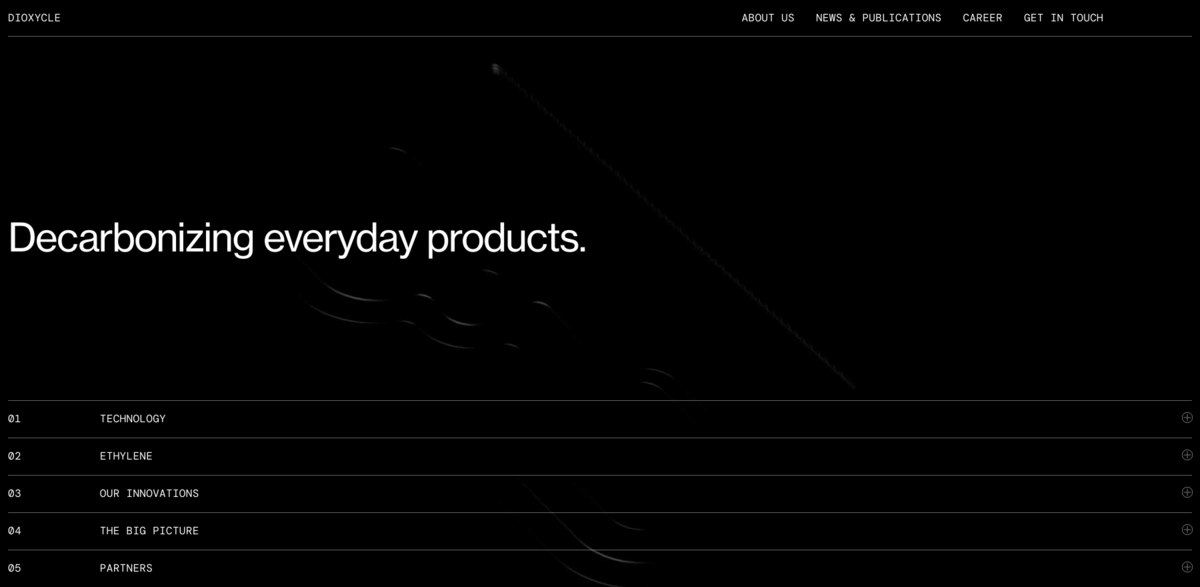What is the Dioxycle Project?
Dioxycle is revolutionizing the way carbon emissions are handled by transforming CO₂ into sustainable ethylene and other valuable chemicals. At its core, the project features a breakthrough electrolyzer designed specifically to convert carbon emissions (COₓ) into ethylene using just renewable electricity and water. This electrolyzer uses stacked plates to distribute COₓ gases to catalytic cores, which then receive electrical power to convert these emissions into sustainable ethylene. The ethylene produced is made entirely from recycled carbon, effectively replacing fossil-based ethylene production. In essence, Dioxycle is turning waste carbon emissions into critical feedstocks cheaper and cleaner than ever before.
Main Benefits of Dioxycle’s Technology
The project brings unmatched cost efficiency and environmental impact, with some impressive figures to back it up:
- Zero to negative green premium of Dioxycle sustainable ethylene compared to fossil ethylene.
- Modularity that enhances capital expenditure (CapEx) efficiency.
- Potential to prevent over 800 million tons of CO₂ emissions annually — that’s more than 1% of the world’s total emissions.
Decarbonizing Everyday Products
Ethylene is a key player in many everyday products, and Dioxycle’s technology helps decarbonize these by recycling emissions into ethylene. This ethylene is essential for producing:
- Fabrics, especially polyester used in clothing and home furnishings.
- Plastics found in consumer goods, car interiors, and packaging materials.
- Construction materials like high-density polyethylene (HDPE) and polyvinyl chloride (PVC), used in pipes, window frames, and flooring.
By replacing fossil-derived ethylene with sustainable alternatives, Dioxycle is helping industries reduce their carbon footprint while maintaining the quality and versatility of these materials.
How Dioxycle’s Electrolyzer Works
The heart of the project is its proprietary low-temperature electrolyzer technology. It tears apart carbon emissions and rebuilds them into energy-rich molecules like ethylene, carbon monoxide (CO), and syngas (a CO/H₂ mixture). This process uses only decarbonized electricity, CO₂, and water — no fossil fuels involved. The result? A circular carbon economy where waste CO₂ is transformed into valuable chemicals and fuels, preventing further accumulation of greenhouse gases in the atmosphere.
The Team Behind the Innovation
Dioxycle’s team is uniquely equipped to push this technology forward. With over 50 years of combined expertise in fuel cell and electrolysis technologies, plus decades in carbon dioxide chemistry, battery science, and material science, the group is a powerhouse of innovation. Half of the team holds PhDs, and they represent 14 nationalities, which fuels a dynamic and diverse approach to solving one of the planet’s biggest challenges. This expertise accelerates technological scale-up and continuous improvements in conversion efficiency.
Project Impact on Sustainable Development Goals (SDGs)
- SDG 7: Affordable and Clean Energy — by using renewable electricity to power the electrolyzers.
- SDG 9: Industry, Innovation, and Infrastructure — through cutting-edge electrolysis technology and retrofitting existing chemical plants.
- SDG 12: Responsible Consumption and Production — by creating sustainable feedstocks from recycled carbon.
- SDG 13: Climate Action — by preventing over 800 million tons of CO₂ emissions annually.
- SDG 17: Partnerships for the Goals — thanks to collaboration with world-class institutional and industrial partners.
Looking Ahead: Building a Sustainable Society
Dioxycle is more than just a technology company — it’s a movement toward a sustainable society based on carbon dioxide utilization instead of fossil fuel extraction. The vision is clear: develop electricity-driven pathways that convert waste carbon emissions into critical feedstocks cheaper and cleaner than ever before. By scaling up their process to recycle over 600 megatonnes of CO₂ each year, Dioxycle is paving the way for 100% sustainable fuels and everyday chemicals, helping industries worldwide reduce their environmental footprint and carbon costs. It’s a bold step toward a circular carbon economy, where emissions are no longer waste but valuable resources.





















